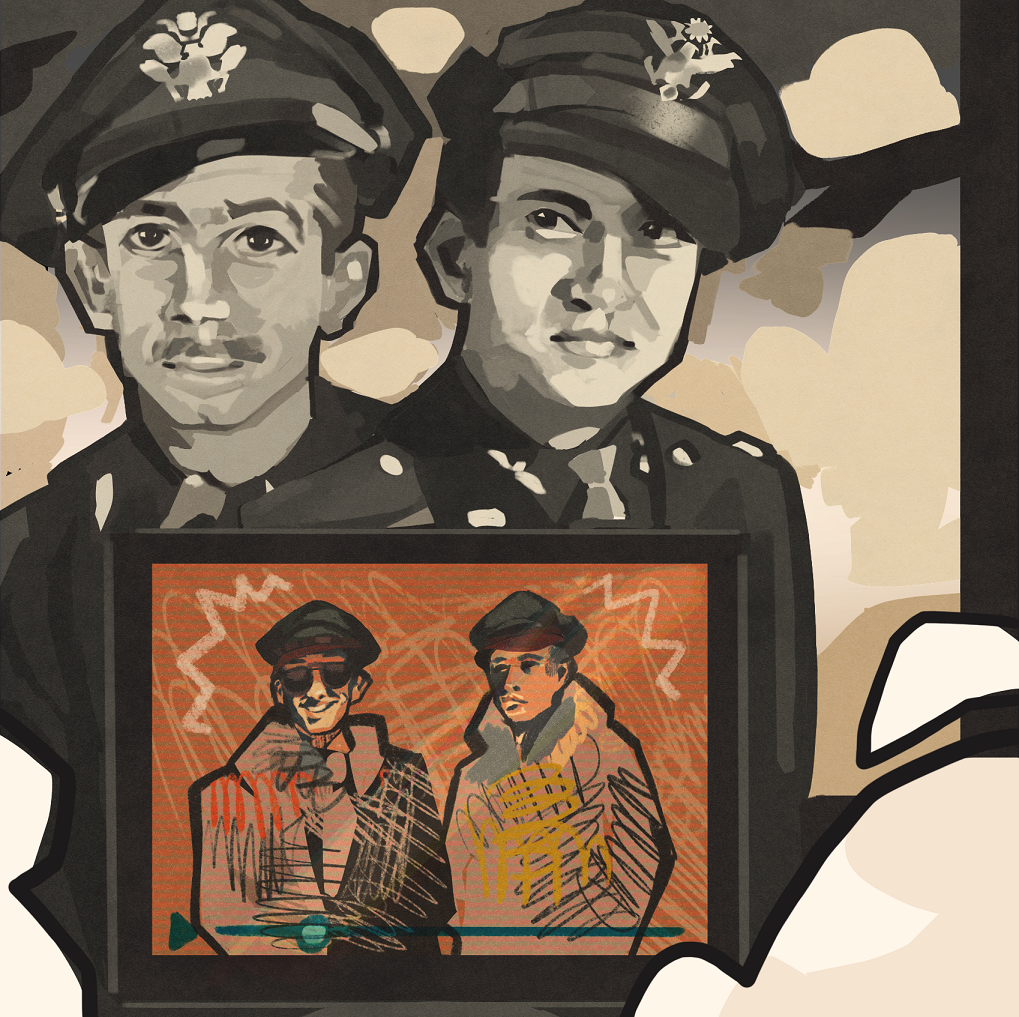Steven Spielberg and Tom Hanks share a passion for exposing viewers to authentic and carefully crafted war stories, and both Hollywood icons came together in 2024 to produce their third World War II miniseries, “Masters of the Air.” The show had unlimited potential with a great cast and historical accuracy, but it ultimately flew too close to the sun with lazy characterization and inconsistent pacing.
The miniseries “Masters of the Air” is based on real-life airmen and follows their journey in the 100th Bomb Group, also known as the “Bloody Hundredth” because of the heavy losses they suffered while destroying targets in German-occupied Europe. The brotherhood formed during their time at the Air Force base and in the skies is the heart of the show, and portrays historical events with a humanistic light. Hanks’ and Spielberg’s previous miniseries, “Band of Brothers” and “The Pacific”, are the holy grail of WWII shows for any history buff, created with incredible attention to detail regarding filming locations, costumes, military boot camps for the actors and historical accuracy in writing. While their new Air Force series was equally incredible in terms of aesthetics, it failed to have the same level of immersion of its predecessors.
While “Masters of the Air” has a similar plot to many of its predecessors — following U.S. military figures’ journeys up to Hitler’s surrender in a short number of episodes with a star-studded cast — its pacing was its downfall. It seemed like a disjointed mish mash of poorly executed flight sequences and brief character interactions, justified by unexplained time skips. In an attempt to squeeze in every bit of Bloody Hundredth history, every plotline lost meaning because of the rushed nature of the scenes. There was a big focus on seemingly real-time aerial battles, with each battle only lasting minutes with devastating outcomes. While the realism of the flight gear and the model planes was extraordinary, the visual confusion destroyed any emotional impact the violence might have had. The oxygen masks coupled with the quick jump cuts between planes made it difficult to understand the outcomes of the battles, and even after these monumental flights, the impact of the scenes is unexplained. It is up to the viewer to piece together what happened to the characters.
The pacing also seemed to showcase the creators’ indecision and lack of focus on their cast. Even with the lengthy episodes, the characters have little depth because they are not given much screen time beyond corny one-liners. Especially infuriating, the Tuskegee Airmen — an Air Force Unit composed of African American men — are shown in only the final two episodes for a handful of minutes, with the writers lazily smushing in their personalities and motivations in the script without any care. The Tuskegee Airmen are effectively included as tokens, while the men’s humanity and personalities are skimmed over and forgotten.
The physicality of the actors is great, with their movements as fluid and comfortable as if they’ve been on their B-17 planes their entire lives. There is also a sense of physical familiarity among the men that cements their characters’ relationships, especially for Austin Butler and Callum Turner, whose friendship is the heart of the series. Unfortunately, the actors were heavily underused in every other aspect, with Butler mainly serving as eye candy and Turner’s character being nothing beyond a hot-headed meathead. Their friendship was endearing, but alone the two lacked the magnetism that the leading roles needed. Fans were also excited for Barry Keoghan’s role in the series, but his cartoonish New Yorker accent tarnished almost every scene he was in.
The show had some redeeming factors such as their cast of relatively unknown actors including Anthony Boyle, Nate Mann and Rafferty Law. These supporting men were scene stealers, acting less like Hollywood macho man cliches and more like real people with complex emotions and motivations. Their subtle charisma was more suited to the subject matter than Butler’s and Turner’s over-the-top performances. But even the cast’s best additions were eventually left in the mud by writers with goofy dialogue and bland storylines as the creators attempted to juggle a handful of different plot lines.
Because of the overall mediocrity and lack of memorable dialogue, there was almost no emotional investment from viewers. It was difficult to gain any attachment to any of the characters when each person’s most dominant character trait was being an all-American military man with a barely tangible sprinkle of individuality. The creators of the series expect viewers to care about the characters just because they are patriotic, which results in a boring viewing experience.
With a star-studded cast and amazing filmmakers backing the project, it was unexpected that “Masters of the Air” would be so forgettable. Its mediocrity comes from a lack of focus and a lack of attention to its characters, resulting in glamorized shells of the real figures the show attempted to spotlight. The show is fascinating at times and beautiful to look at, but ultimately falls flat.







